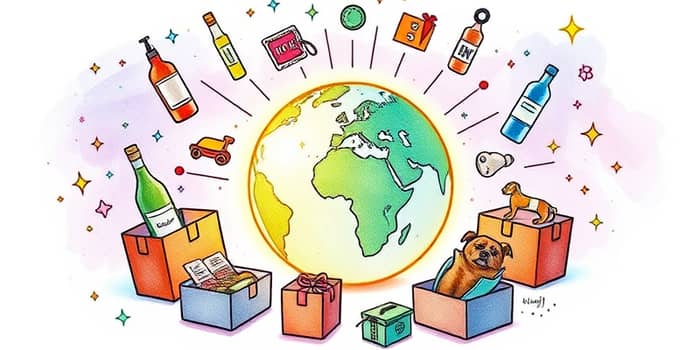
Subscription-based business models have long been associated with magazines, streaming platforms, and software services. Today, however, they are reshaping landscapes far beyond their traditional domains. From pet supplies delivered to your doorstep every month to car-as-a-service schemes that eliminate long-term commitments, the subscription economy is reaching every corner of commerce.
Powered by convenience, personalization, and consistent value, companies of all shapes and sizes are recognizing the transformative potential of recurring revenue. In this article, we explore the forces driving this movement, examine real-world examples, and offer practical guidance for businesses and consumers alike.
Once the domain of newspapers and software, subscription models now thrive in industries that once seemed immune to recurring payments. The expansion into these new frontiers is a testament to both consumer appetite for simplicity and corporate desire for predictable income.
These offerings demonstrate the power of predictable recurring revenue and improved cash flow for businesses, while giving customers more flexibility than one-off purchases.
The subscription box market alone soared from $40 billion in 2020 to an anticipated $74 billion by 2025. Adoption is driven by both sides of the value equation: consumers prize efficiency and delight, and companies crave stable forecasting.
This data underscores a fundamental shift: businesses no longer compete solely on product, but on ongoing relationships. The ability to tailor offerings and deliver delight month after month has become a competitive differentiator.
At the heart of this transformation lies cutting-edge innovation. Through hyper-personalization through advanced AI algorithms, companies can analyze purchase history, preferences, and even social media behavior to craft deeply tailored subscription experiences.
From chatbots that automate customer support and upselling to real-time adjustments in delivery frequency, technology empowers subscribers with unprecedented control and brands with actionable insights.
Retention is the lifeblood of any subscription business. While acquisition costs can be steep, a devoted subscriber base can yield a high lifetime value. Brands are increasingly investing in immersive community-driven brand experiences to foster belonging and advocacy.
Such strategies address major churn factors: inflexible frequency, novelty fatigue, and declining perceived value. By continually evolving offerings and creating emotional bonds, businesses can sustain subscriber enthusiasm.
The New York Times has mastered subscription bundling, pairing premium journalism with niche vertical offerings like sports and consumer reviews. Netflix, the trailblazer in streaming, exemplifies retention through personalized recommendations and targeted re-engagement emails. Stitch Fix leverages data science to curate clothing selections tailored to individual style profiles, while meal-kit pioneers like HelloFresh adapt menus to dietary restrictions and weekly schedules.
Even the automotive industry is getting in on the action. Car-as-a-service platforms provide flexible vehicle access without long-term leases, appealing to urban dwellers and eco-conscious drivers alike.
Despite unparalleled growth, the subscription ecosystem faces significant hurdles. Easy cancellation policies can drive high churn, and consumers are increasingly wary of a subscription fatigue and saturation risks. Moreover, complex logistics around delivery schedules, returns, and quality control demand sophisticated operational frameworks.
Looking forward, the sustainability of the model will hinge on continuous value creation. Cross-industry bundling—such as combining media content with physical goods or pairing roadside assistance with vehicle subscriptions—promises new revenue streams. Deeper integration of AI, machine learning, and immersive technologies will further anticipate user needs and refine offerings.
In sum, the rise of subscription models in unexpected sectors represents a paradigm shift. By crafting compelling, personalized experiences and fostering genuine community bonds, businesses can transform one-time buyers into lifelong patrons, ensuring a resilient foundation for growth in the years to come.
References













